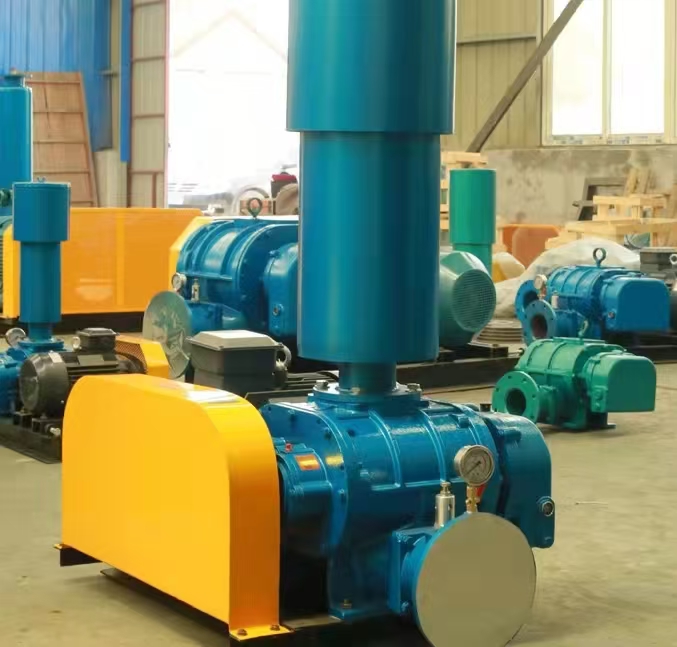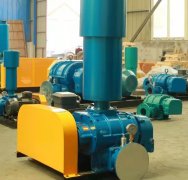###Comparison of Differences between Centrifugal Fans, Roots Fans, and Rotary Fans**
These three types of fans are all used for gas transportation or pressurization, but their working principles, structural characteristics, and applicable scenarios differ significantly. Here is a detailed comparison:
---

##1. Overview of Core Differences**
|* * Comparison item * * | * * Centrifugal fan * * | * Roots blower * * | * Rotary fan (such as screw type) * *|
|------------------|--------------------------|--------------------------|--------------------------|
|* * Working principle * * | Centrifugal force accelerates gas | Volumetric conveying (without internal compression) | Volumetric compression (with internal compression)|
|* * Compression method * * | Dynamic compression (impeller kinetic energy conversion) | No compression, pressure generated by system resistance | Internal compression of rotor engagement|
|* * Flow pressure characteristics * * | Flow rate significantly decreases with increasing pressure | Flow rate is constant, pressure is adjustable | Flow rate is stable, pressure range is wide|
|* * Efficiency * * | High at medium high pressure (70-85%) | High at low pressure (50-70%) | High efficiency at medium high pressure (75-88%)|
|* * Noise * * | Low (high-frequency airflow sound) | High (rotor meshing pulsation) | Medium (continuous compression)|
|* * Maintenance complexity * * | Low (simple structure) | Medium (requires gap adjustment) | High (precision sealing requirements)|
|* * Typical pressure range * * | 0.1~1.5 bar | 0.1~1.0 bar (single-stage) | 0.5~3 bar (screw type)|
|* * Typical applications * * | Ventilation, air conditioning, boiler induced draft, sewage treatment, pneumatic conveying, compressed air, vacuum systems|
---
##2. Detailed explanation of working principle**
### **1. Centrifugal fan**
-Principle: The motor drives the impeller to rotate, and the gas is thrown towards the outer edge of the impeller by centrifugal force, converting kinetic energy into static pressure.
-* * Features * *:
-The flow rate is proportional to the rotational speed, and the pressure is proportional to the square of the rotational speed.
-When operating at low flow and high pressure, it is prone to surge and should be avoided from running at low flow for a long time.
### **2. Roots blower**
-Principle: Two rotors mesh and rotate, delivering gas through volume changes without internal compression.
-* * Features * *:
-The flow rate is constant, and the pressure is determined by the resistance at the rear end.
-Reverse rotation can damage the rotor and requires strict inspection of the steering direction.
### **3. Rotary fan (taking screw type as an example)**
-Principle: The yin-yang screw meshes and rotates, gradually compressing the gas in the spiral groove.
-* * Features * *:
-Internal compression reduces energy consumption and is suitable for medium and high voltage scenarios.
-Lubricating oil cooling and sealing are required (except for oil-free screws).
---
##III. Performance Curve Comparison**
|* * Fan type * * | * * Flow pressure curve * * | * * Key characteristics * *|
|------------------|---------------------------|----------------------------|
|* * Centrifugal fan * * | Steep drop curve (sudden decrease in flow at high pressure) | Need to avoid the surge zone|
|Roots blower * * | Near vertical line (constant flow) | Overpressure will overload, safety valve is required|
|* * Rotary fan * * | Smooth curve (wide high-efficiency zone) | Suitable for variable operating conditions|
---
##4. Selection Guide**
###Priority should be given to centrifugal fans**
-High flow medium pressure (such as factory ventilation and air conditioning systems).
-Clean gas (with a dust content of<50mg/m ³).
-Space limitation (compact structure of centrifugal fan).
###Prioritize the use of Roots blowers**
-Constant flow low pressure (such as sewage aeration, powder transportation).
-* * Dusty/humid gas * * (dirt resistant, simple structure).
-Frequent start stop (no risk of surge).
###Priority should be given to selecting a rotary fan**
-Medium to high voltage demand (such as compressed air stations, vacuum packaging).
-Low noise requirement (screw type Birotz quiet).
-Energy saving scenario (with significant advantages in long-term operational efficiency).
---
##5. Maintenance and Fault Comparison**
|* * Question * * | * * Centrifugal Fan * * | * Roots Fan * * | * * Rotary Fan * *|
|------------------|--------------------------|--------------------------|--------------------------|
|* * Common faults * * | Bearing vibration, impeller wear | rotor collision, gear damage | screw wear, seal leakage|
|* * Maintenance focus * * | Dynamic balance correction, bearing lubrication | Gap adjustment, synchronous gear inspection | Lubricating oil replacement, seal update|
|* * Lifespan * * | 5-10 years (depending on operating conditions) | 3-8 years (requiring regular gap adjustment) | 5-12 years (precision maintenance)|
---
##VI. Economic Comparison**
|* * Cost Item * * | * * Centrifugal Fan * * | * Roots Fan * * | * * Rotary Fan * *|
|------------------|--------------------|--------------------|--------------------|
|* * Initial cost * * | Low | Medium | High|
|* * Operating energy consumption * * | Medium (high efficiency zone energy-saving) | High (low voltage applicable) | Low (medium high voltage high-efficiency)|
|* * Maintenance cost * * | Low | Medium | High|
---
###* * Summary**
-* * Centrifugal fan * *: Suitable for high flow ventilation, economical but afraid of dirt and stains.
-Roots blower: dirt resistant, stable flow rate, but high noise and low energy efficiency.
-* * Rotary fan * *: High efficiency and energy-saving, suitable for medium and high pressure, but maintenance is complex.
Select comprehensively based on pressure requirements, medium characteristics, and budget. If specific model recommendations are needed, further analysis of operating parameters (flow rate, pressure, gas properties, etc.) can be provided!



